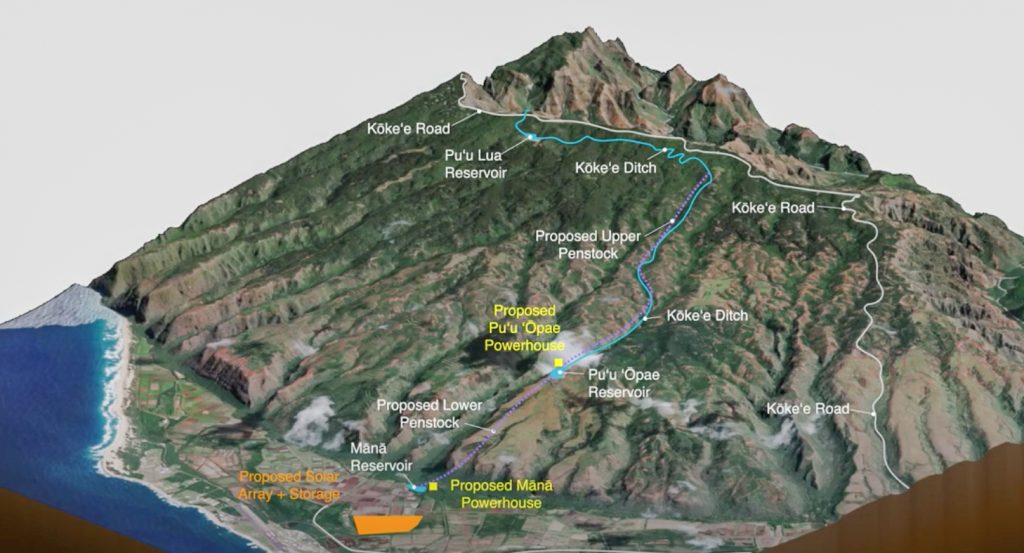West Kaua’i Energy Project clears environmental regulatory hurdle

The West Kauaʻi Energy Project can move forward after the completion of a four-year environmental review process has led to the state’s Finding of No Significant Impact.
The Chairperson of the Hawaiʻi State Department of Land and Natural Resources issued the finding following a review of a final environmental assessment submitted by Kauaʻi Island Utility Cooperative earlier this month.
The review found the project “will not have a significant effect on the environment and therefore does not require the preparation of an EIS [Environmental Impact Statement].”
The West Kauaʻi Energy Project is an innovative pumped-storage hydro and irrigation project, coupled with solar and battery storage, that is being undertaken by the Kauaʻi Island Utility Cooperative and its renewable energy partner, AES.
The project is expected to provide up to 25% of Kauaʻi’s power supply and bring the utility cooperative to more than 80% renewable generation.
The project also will create economic development and agricultural opportunities for Native Hawaiians and the west side communities of Waimea and Kekaha by delivering irrigation water to lands owned by the Department of Hawaiian Home Lands and the Agribusiness Development Corporation.
“This is a huge step forward for DHHL and applicants on the waiting list,” said William J. Aila, Jr., Chair of the Hawaiian Homes Commission. “Ultimately, this project will bring much needed water for the future homesteaders of Puʻu ʻŌpae.”
The final environmental assessment includes cultural, archaeological, flora and fauna and socio-economic studies. It also includes a stream habitat assessment and hydrology analyses; all of which have been ongoing since 2018.
David Bissell, president an CEO of the Kauaʻi Island Utility Cooperative, said the Finding of No Significant Impact is a “significant milestone for the project and for Kauaʻi’s quest for energy independence and greenhouse gas emission reductions.
“The environmental review process has taken four years to complete, and the final assessment contained thousands of pages of documentation.”
Bissell said the next steps involve seeking land agreements and required permits with a goal of bringing the project operational by 2026.
The Final Environmental Assessment is expected to be published by the Office of Environmental Quality Control in the Jan. 8, 2023 edition of The Environmental Notice on its website: Environmental Review Program (hawaii.gov).



